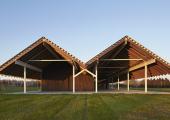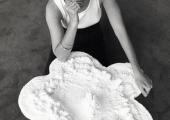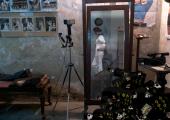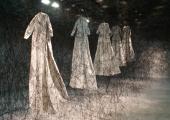theartsdesk in the Hamptons: The $26 Million Barn

Pollock and de Kooning settle in to a new address on Long Island
There’s never a good day for traffic in the Hamptons, and a Friday in August takes the biscuit. The Montauk Highway, also known as Route 27, was bumper to bumper on the way to the Parrish Art Museum, recently relocated from nearby Southampton village to an exciting new building in the Watermill area. However the slow pace didn’t prevent me missing the turning for the museum, a remarkable achievement as it’s a vast barn-like structure, the length of two football fields, just off the highway on a site of a former tree nursery.







